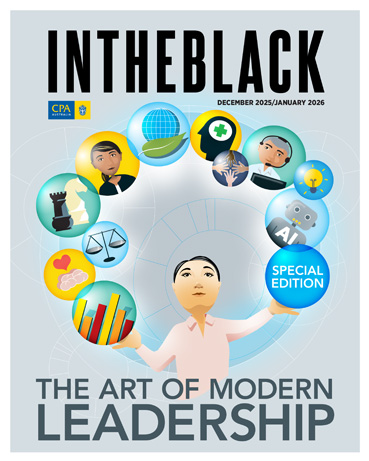Loading component...
At a glance
For a long time, collaboration has been a buzzword in the workplace.
According to popular belief, a group working collaboratively can produce better results than an individual — as summed up in the adage “two heads are better than one”.
While this may have proved true in the past, research is beginning to show that in some instances, collaboration can hamper productivity.
According to a report published in the Harvard Business Review, collaborative activities such as attending meetings and responding to emails account for as much as 80 per cent of employees’ time in many organisations, leaving little time to complete essential tasks.
The consequences of this phenomenon, described as “collaboration overload”, include declines in performance and increased employee burnout and turnover.
Research also shows that collaboration doesn’t always deliver a return on investment. A 2023 study found that, in many cases, collective decision-making did not improve accuracy and took longer than an individual working alone.
How can organisations redesign teamwork to avoid collaboration overload?
Collaboration isn't always the answer
Collaboration is a valuable tool for accessing collective intelligence to solve problems or create value within organisations.
However, its popularity means it has become the default in many settings.
“People assume that collaboration is the best way of approaching all problems, but we need to be much more selective,” says Professor Anya Johnson from the University of Sydney Business School.
Johnson says collaboration is useful in solving “sticky problems” where the outcome is uncertain, rather than straightforward scenarios where practices are already in place.
“The challenge of collaboration is, one, it takes time — you can't do it quickly.
And two, it takes energy, so people invest time in identifying solutions.
“If there's too much collaboration, there’s a danger we create too much complexity in the solutions we're creating.”
Collaboration can serve another purpose. “It's not just about solving the problem,” Johnson says. “It's also about engaging people and getting their buy-in for the solution.”
To engage staff, collaboration must be acted upon. “If people don’t see outcomes, then they're going to start disengaging from collaboration,” Johnson says.
“Collaboration will become those meetings where everybody goes away and thinks, ‘That was a waste of time.’ You need to use it judiciously.”
Redesigning collaboration
Leadership expert Simon Dowling says one of the effects of the COVID-19 pandemic has been a reassessment of collaboration in many organisations.
The post-pandemic return to the office has triggered conversations about how to foster collaboration, what form it should take and what are the desired outcomes.
“Organisations are focused on working towards productive collaboration, rather than just engaging in collaboration for collaboration’s sake,” Dowling says.
“It's not enough to simply encourage people to collaborate more often or to stick it up on a poster. It requires design, asking: ‘What are the outcomes we're looking for? Who are the right people to include? And how do we give people the skills to design it themselves?’”
Knowing when not to collaborate is just as important, Dowling says.
“Sometimes, people collaborate because they feel like it’s expected of them, but the decision is already made. In this situation, collaboration becomes ‘window dressing’, which undermines trust in a big way.”
Cost is another factor. “In a crisis, the cost of collaboration may outweigh its benefit, because the customer issue needs to be resolved straight away, or that employee complaint needs to be addressed immediately, so we need to move fast,” he says.
Dowling says collaboration also risks diluting expertise.
“I see this a lot: There are one or two people who have deep expertise in an area, but the default towards collaboration means decisions get made by a group of less-qualified people. As a result, you get watered-down, democratic decisions that aren't necessarily the best outcome.”
Why workplace collaboration starts with people
Make collaboration more effective
Johnson believes effective collaboration begins with “divergent thinking” — where people brainstorm ideas, however left-field — before the team converges on the best solutions.
“It’s important to set the right tone so people feel safe to open their thinking, so no idea is a bad idea.”
Language also matters, says Dowling. Productive collaboration is “value-focused” with a clear target.
He also recommends being clear about what collaboration is — and what it isn’t.
“Collaboration is where you’re very consciously bringing people together to invest their time and energy in a project because working together will deliver a better outcome than doing it alone.
“That's different from cooperation, where people are helpful and available to assist one another when they're asked to or are willing to ask for help.
That's different, again, from connection, which I can do through having a chat with you while we're making a coffee together to find out what's going on in your team at the moment,” Dowling says.
Effective collaboration key takeaways
- Collaboration is useful in solving “sticky problems” where the outcome is uncertain.
- Collaboration is not just about solving the problem but engaging the team in the solution.
- Begin with divergent thinking and brainstorming creative ideas.
- Ask: “What are the outcomes we're looking for? Who are the right people to include? And how do we give people the skills to design it themselves?”

